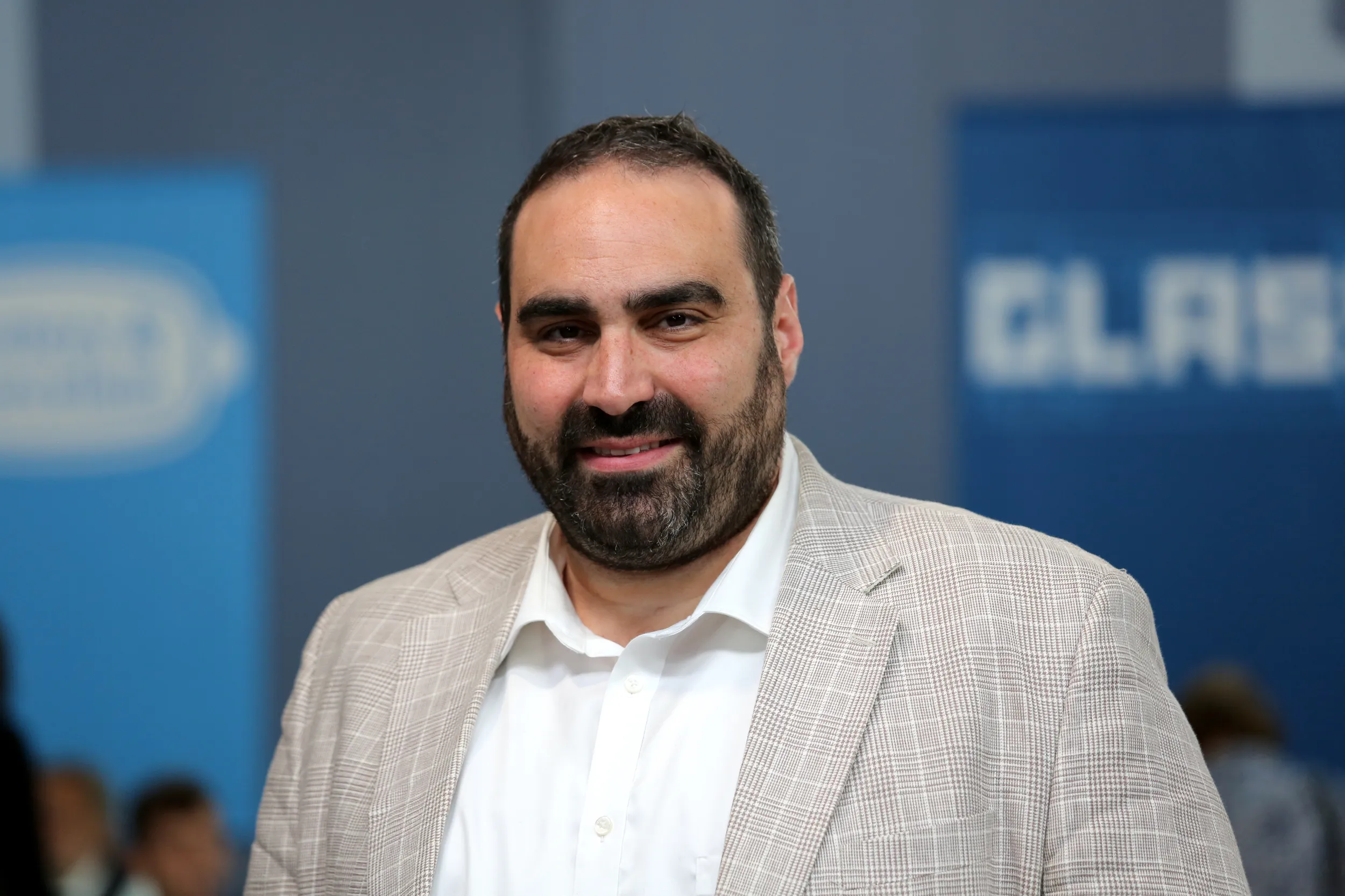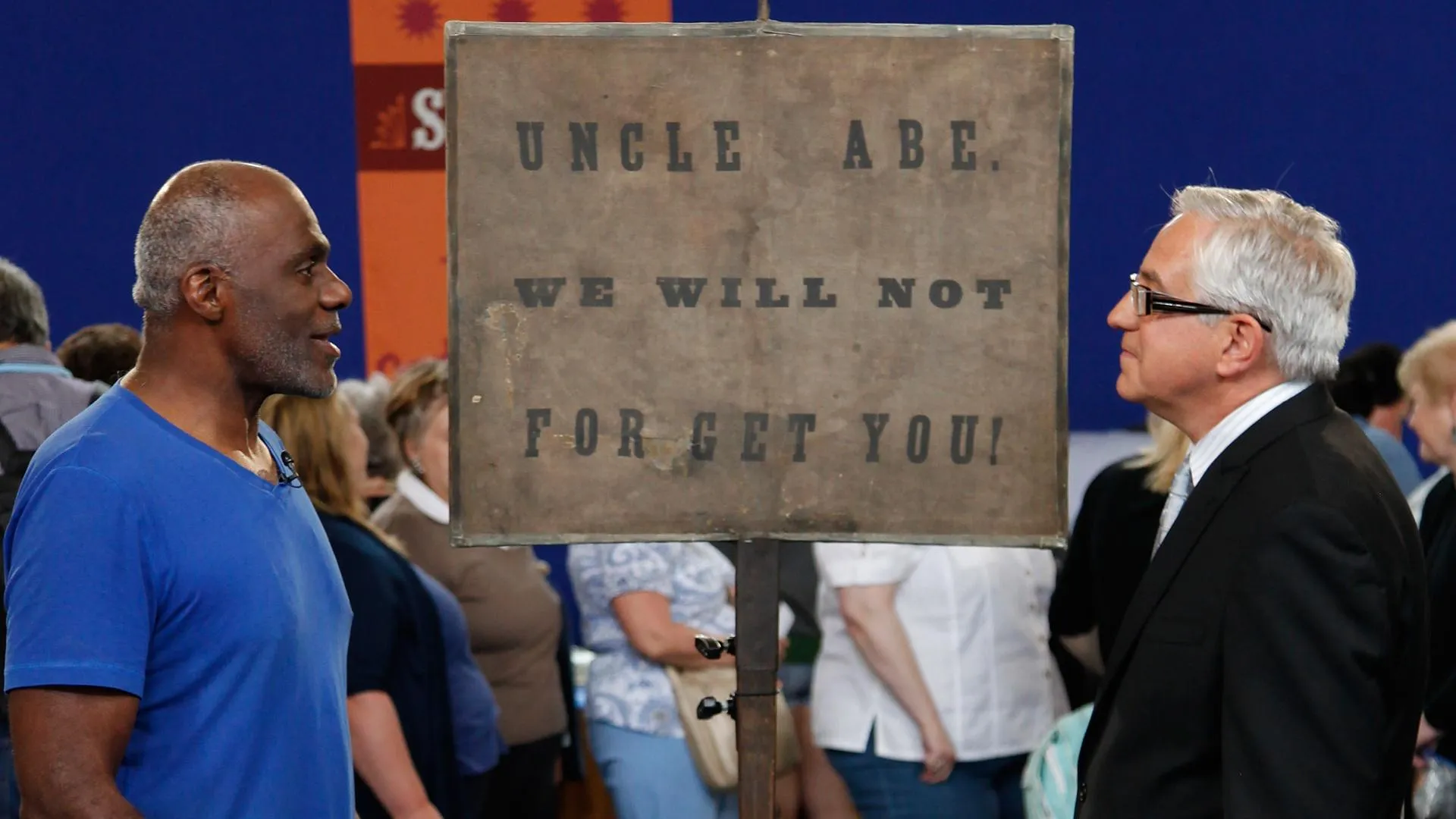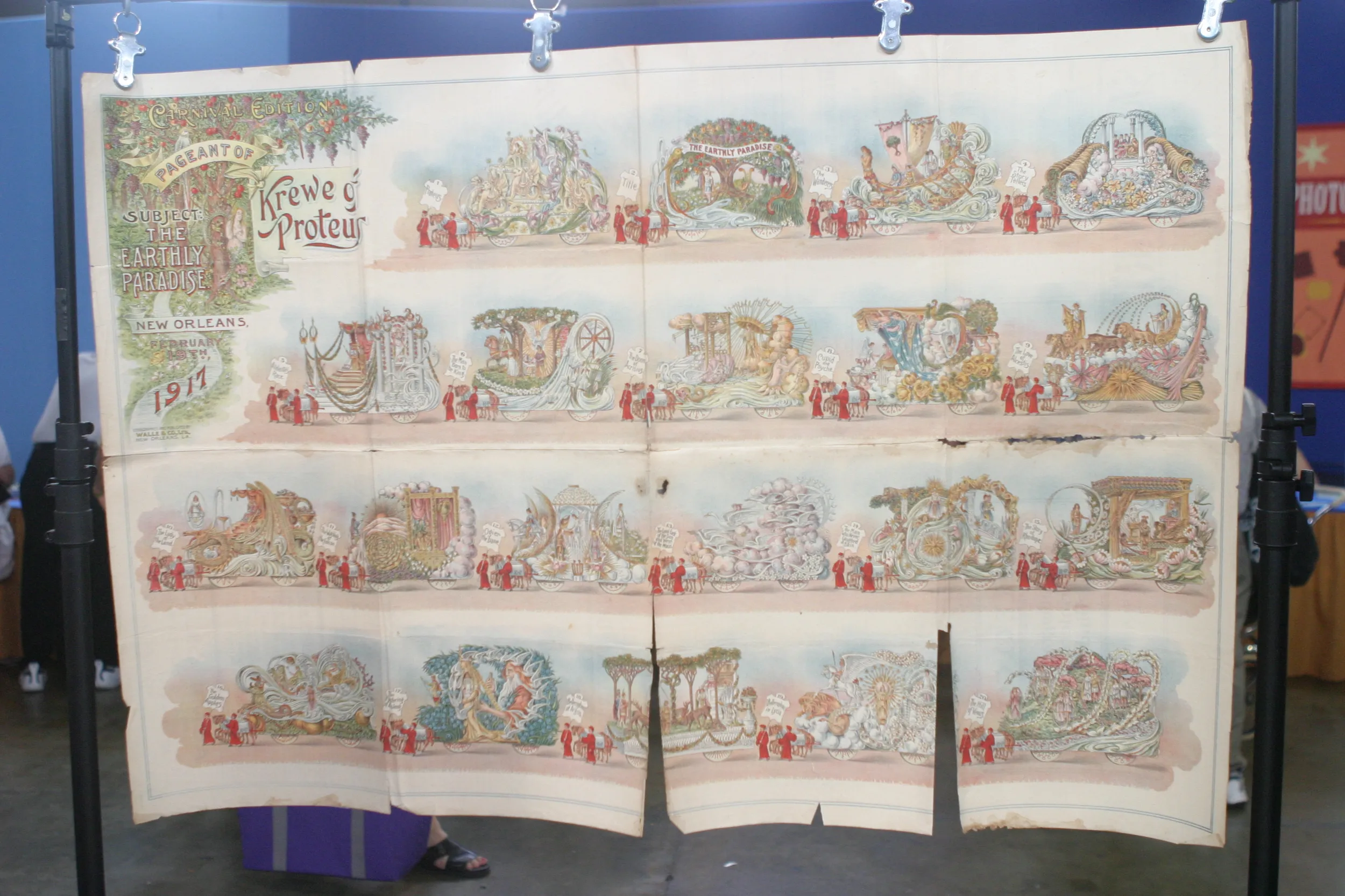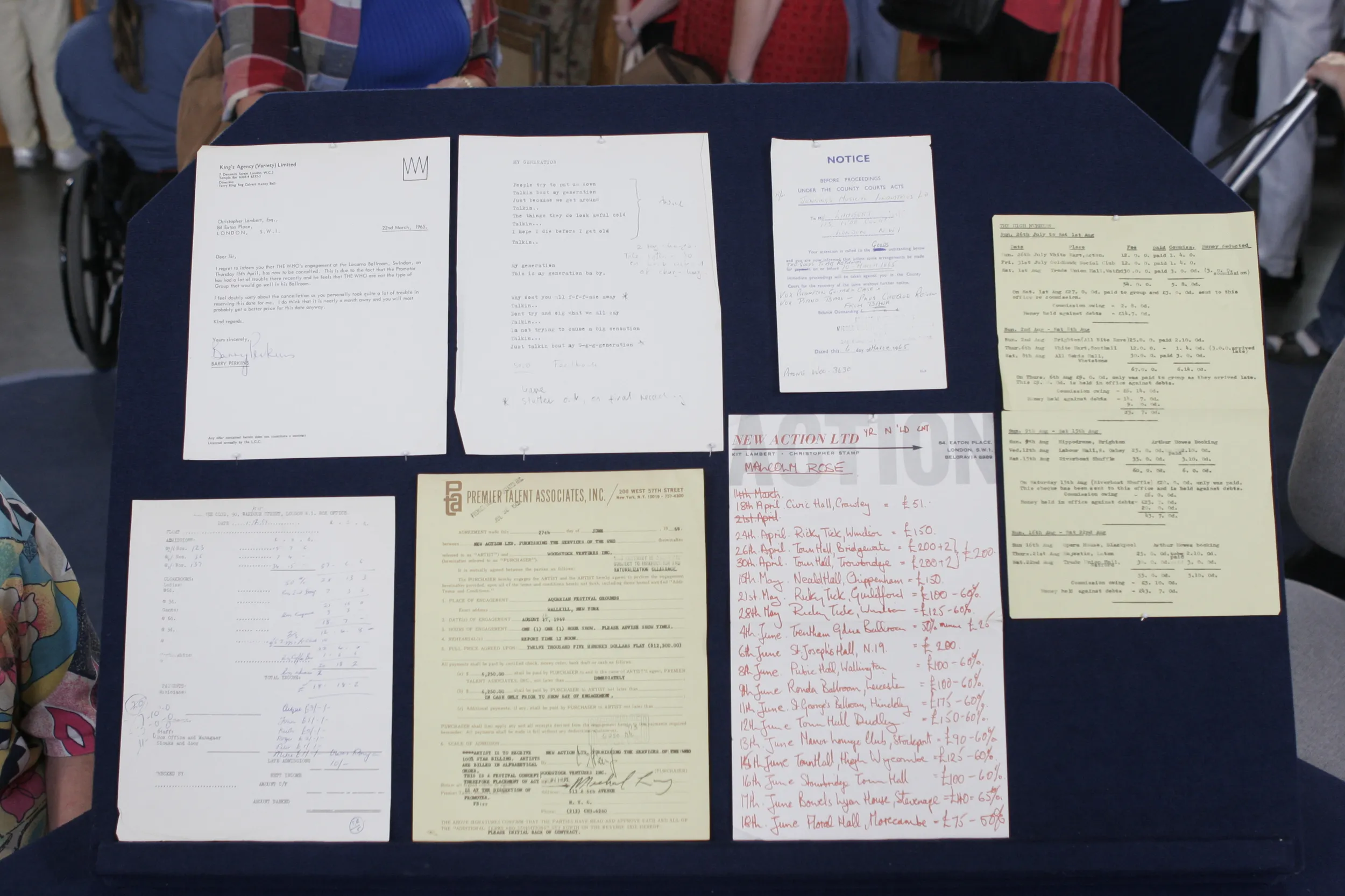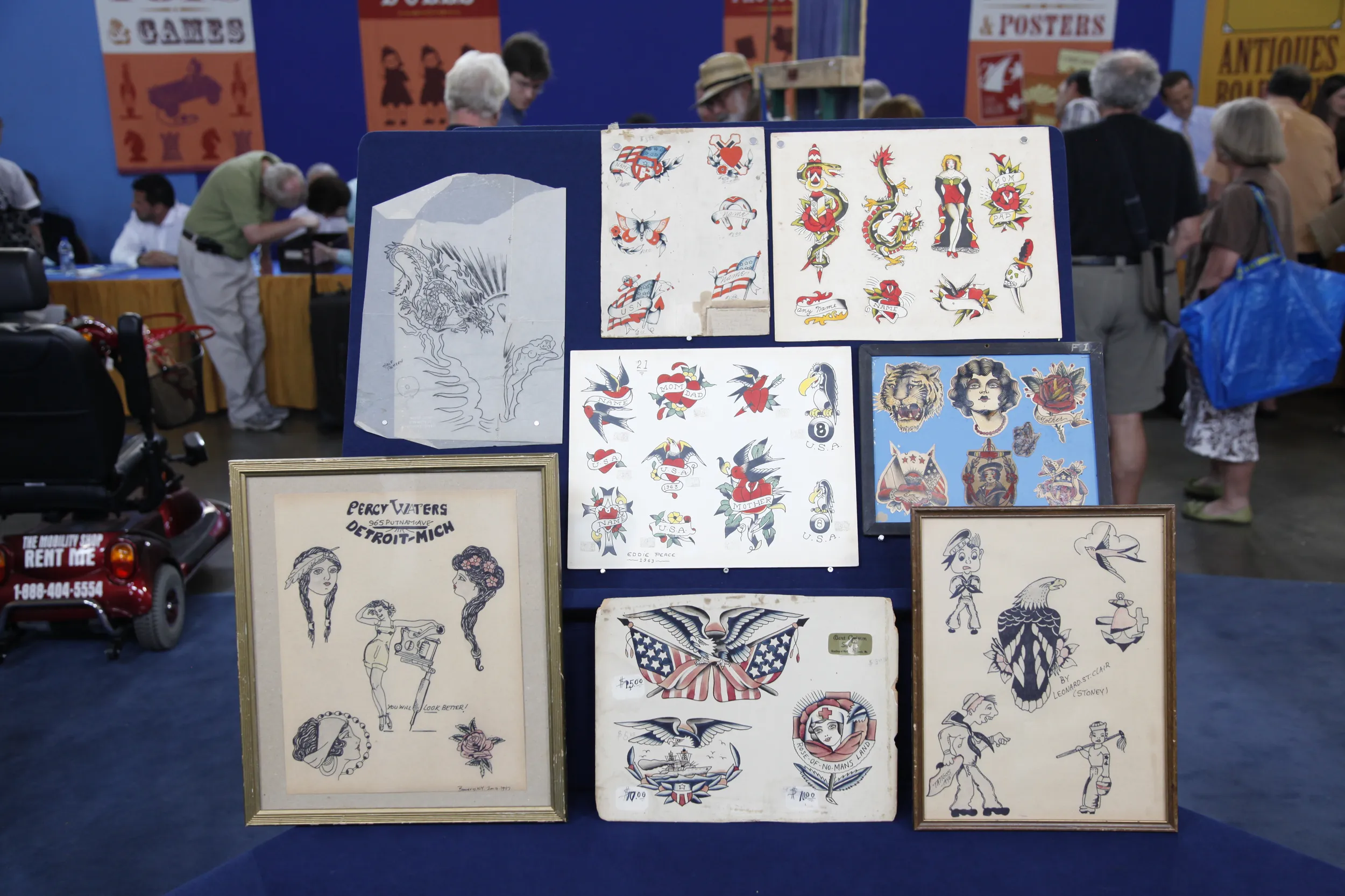GUEST: When I first started getting tattooed, I met a gentleman who tattooed me in Iowa. And as his health wasn't doing too well, he knew that I was just intrigued by the art, and he offered to, you know, sell it to me, if I promised to just hold onto them and preserve them. And since then I have become a tattoo artist, and looking at this stuff and doing the research of who these people are got me interested in tattooing. And ten years later, I'm still tattooing, so...
APPRAISER: Well, that's wonderful. And what we have here is vintage tattoo flash and some design work. These are the designs that the tattoo artists would have in their shops. And people would pick out, you know, what they liked, and then they'd go for it. Now, we have some really interesting tattoo artists represented here, correct?
GUEST: Yes. Over there you've got a drawing by Sailor Jerry Collins, who tattooed all over the world, but ended up in Honolulu and tattooed a lot of the sailors out there during the war. You've got Cap Coleman over here, who everyone looked up to. His motto was "Bold Will Hold," so he kept it very simple with a lot of black shading. Black pigment held the longest out of color. They knew the secret of putting enough black into a tattoo so that ten, 20, 30, 40, 50 years from now the tattoo still looks like how it did the day you got it. A gentleman by the name of Eddie Peace, they called him Tex Peace, who still has a shop in Augusta, Georgia, with a third-generation tattooer. Stony St. Clair, tattooed in Columbus, Ohio. He was in a wheelchair. He was a sword swallower in the circus, and Cap Coleman had taught him how to tattoo. Bert Grimm, another tattooer who tattooed all over, but ended up tattooing on the Pike in Long Beach. And then you've got Percy Waters over there, who was one of the main distributors in tattoo supplies.
APPRAISER: And what about the one with the blue background here? What do you know about that?
GUEST: Well, I really don't know much about it. A lot of tattooers back then really didn't sign their art. They didn't really think anything of it, because back then, tattoos were very taboo.
APPRAISER: And boy, today the popularity of tattoo art has just skyrocketed. And it's such a wonderful thing to see these beautiful vintage examples, all hand painted, hand drawn. And you're dealing with art from the '30s, the '40s, the '50s, the '60s.
GUEST: Mm hmm.
APPRAISER: It's really quite a remarkable collection. How much did you pay for it?
GUEST: It came with a bunch of other equipment. I gave him $500 for it, which at the time was a lot, but I knew that it was something that was special.
APPRAISER: With the popularity and the interest and the rarity of this material, you have an amazing collection now. This is just some examples of the collection. You have more. A collection like this I would insure for $15,000, $20,000, somewhere in that range.
GUEST: Oh, my gosh, wow.
APPRAISER: Yeah, it's a remarkable collection.
GUEST: Wow, that's great. Oh, wow. Oof. That's exciting.
